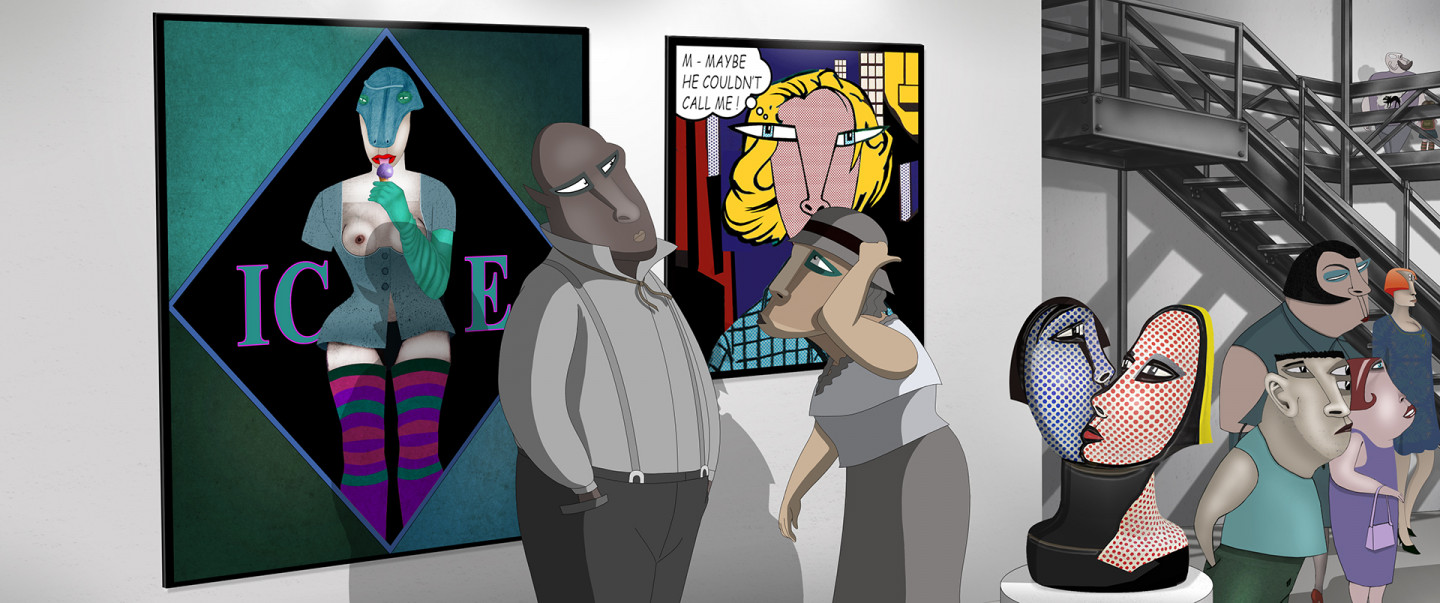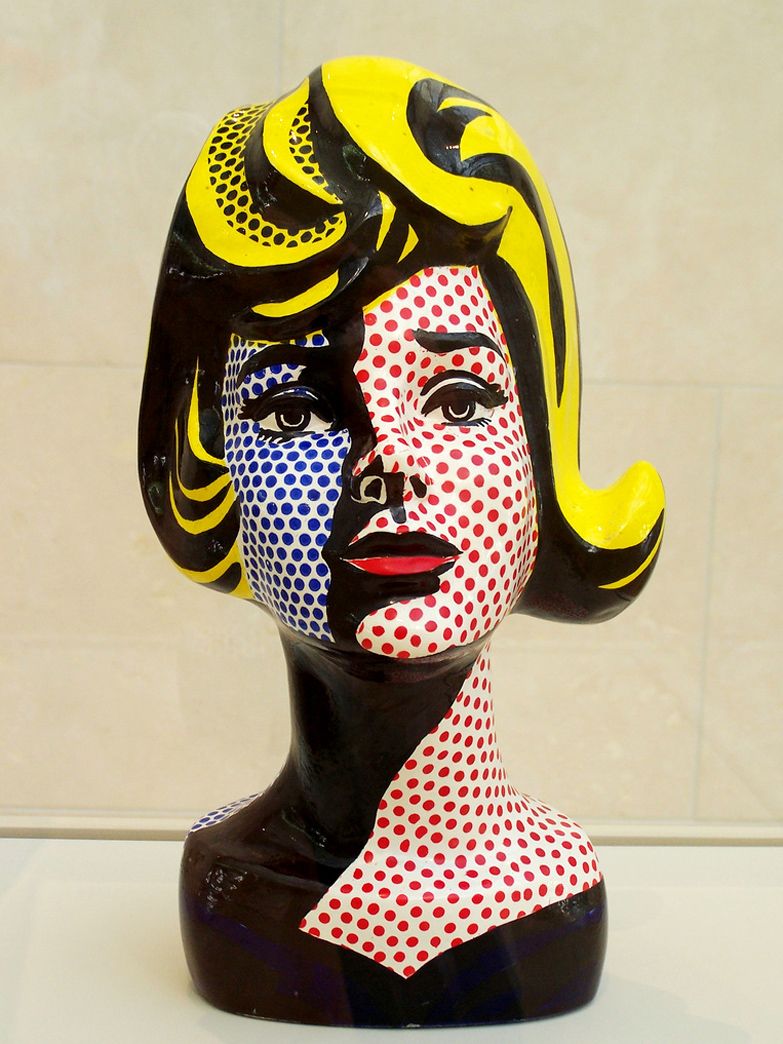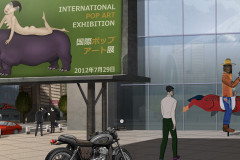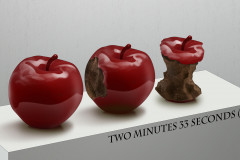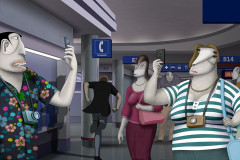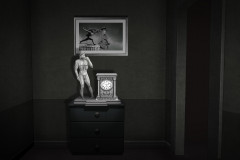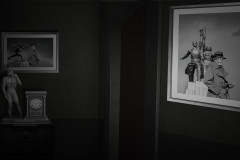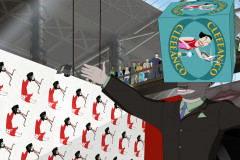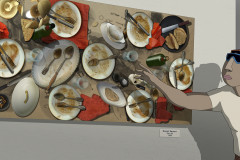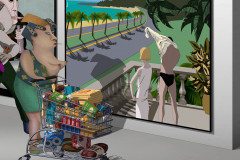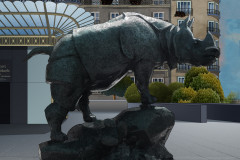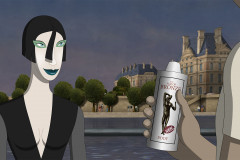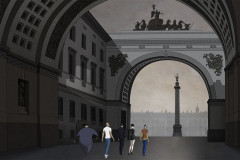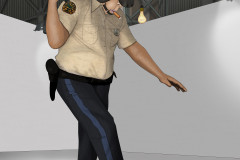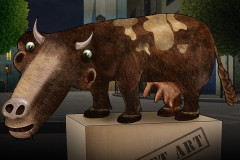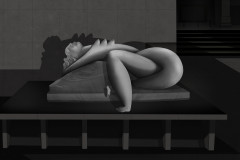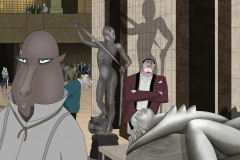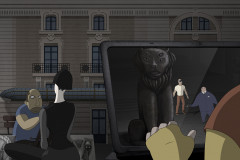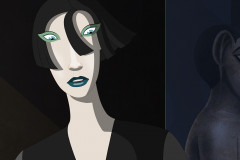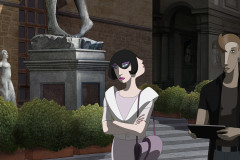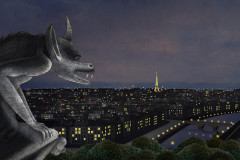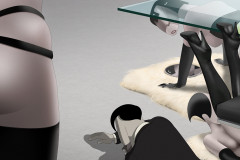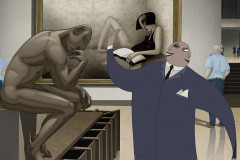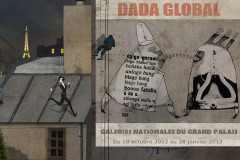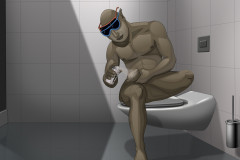Lichtenstein, Roy (1923-1997): Fej kék árnyékkal, 1965 (festett kerámia, 38 cm magas, Nasher Sculpture Center, Dallas). Az elsősorban festőként ismert amerikai pop-art művész három dimenziós alkotásokkal is kísérletezett. Ez híres kerámia fejsorozatának egy darabja, amely „kétoldalas” színezése folytán igazán alkalmas arra, hogy a Ruben Brandt-féle „megkettőzött” világ számára átalakítsuk. A filmbeli tokiói pop-art kiállításon meg is lehet nézni, hogy mi lett belőle...
A festészeti munkásságával párhuzamosan Lichtenstein folyamatosan kipróbálta magát a szobrászat területén is – bár ilyenkor is inkább „festőként gondolkozott” - szobrai általában a festményein szereplő alakok, motívumok három dimenziós változatai. Ahogy képeihez a kommersz művészetből (képregényekből, reklámfotókból) választott magának alapanyagot, úgy a '60-as években alkotott kerámiafejeihez a műterme közelében lévő kalapüzemben talált próbafejek adták az inspirációt. A szőke, fekete vonalakkal és a három alapszínnel (kék, sárga, piros) kifestett porcelánfej valóban Lichtenstein képregény-lányainak 3D-s verziója, amelyen tónusozásra ugyanúgy a nyomdatechnika rasztrepontjait használja. Festményein nincsen árnyékolás, a szobron viszont – ahol alapvetően nem kellene árnyékot festeni, hiszen térbeli tárgyként eleve rendelkezik természetes árnyékkal – van. Így a körbejárhatóság ellenére mégis mintha csak egy, árnyékai által rögzített nézőpontból lehetne nézni az arcot, amely ezáltal élénksége mellett is veszít életszerűségéből. Már megint a pop-art zavarba hozó játéka.
Lichtenstein, Roy (1923–1997): Head with Blue Shadow, 1965 (painted ceramic, 38 cm high, Nasher Sculpture Center, Dallas). Although primarily known as a painter, the American pop artist also experimented with three-dimensional works. This piece is part of his famous ceramic head series, and its “double-sided” coloration makes it particularly suitable for reimagining within the “duplicated” world of Ruben Brandt. In the film, the Tokyo pop art exhibition features a transformed version of it.
Alongside his painting, Lichtenstein continuously explored sculpture—though even then, he tended to “think like a painter.” His sculptures are often three-dimensional versions of figures or motifs found in his paintings. Just as he drew material from commercial art (comics, advertising photography) for his canvases, his ceramic heads from the 1960s were inspired by mannequin heads found in a hat store near his studio. The blond porcelain head, painted with black outlines and the three primary colors (blue, yellow, red), is essentially a 3D version of Lichtenstein’s comic book girls, with halftone dots used for shading—just as in his prints. His paintings contain no shadowing, but here—on a sculpture, where natural shadows already exist—he paints them on. As a result, even though the object can be viewed from all sides, the face seems fixed to a single viewpoint by its painted shadows, making it appear less lifelike despite its vividness. Once again, pop art’s disorienting play is at work.






